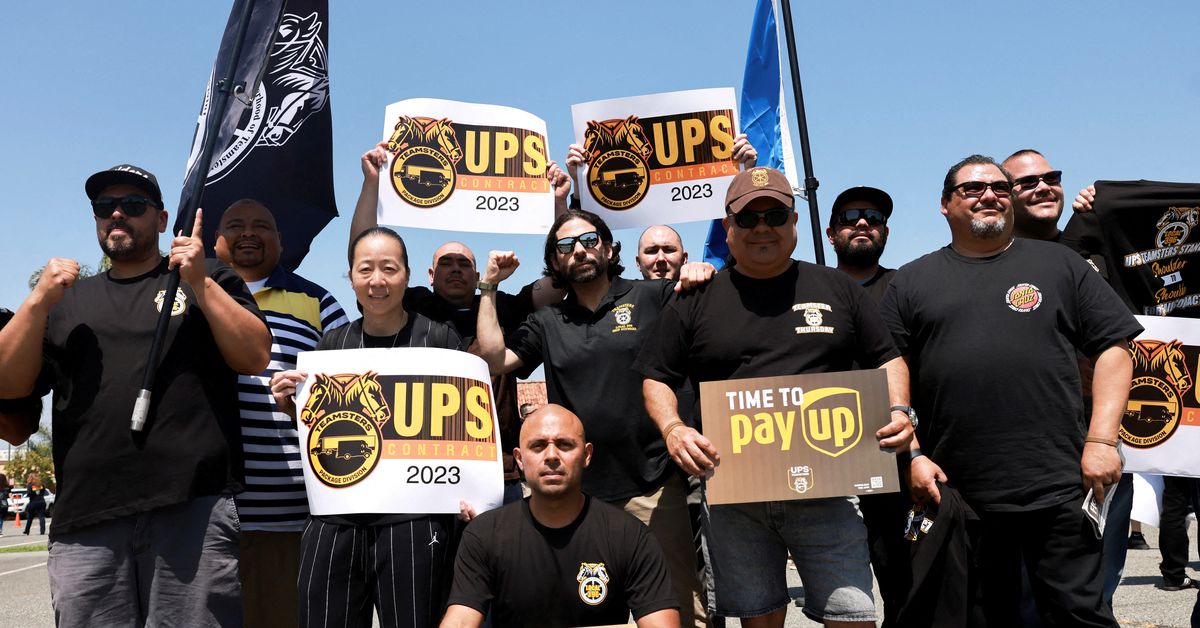- cross-posted to:
- news@kbin.social
- worldnews@sh.itjust.works
- cross-posted to:
- news@kbin.social
- worldnews@sh.itjust.works
A threatened U.S. strike at United Parcel Service (UPS.N) could be “one of the costliest in at least a century,” topping $7 billion for a 10-day work stoppage, a think tank specializing in the economic impact of labor actions said on Thursday.
That estimate from Michigan-based Anderson Economic Group (AEG) includes UPS customer losses of $4 billion and lost direct wages of more than $1 billion. A 15-day UPS strike in 1997 disrupted the supply of goods, cost the world’s biggest parcel delivery firm $850 million and sent some customers to rivals like FedEx (FDX.N).
Roughly 340,000 union-represented UPS workers handle about a quarter of U.S. parcel deliveries and serve virtually every city and town in the nation. A strike could delay millions of daily deliveries, including Amazon.com (AMZN.O) orders, electronic components and lifesaving prescription drugs, shipping experts warned. They added this also could reignite supply-chain snarls that stoke inflation.
Anderson said a UPS employee walkout would be a bigger risk to the U.S. economy than a work stoppage by UAW workers at the “Detroit Three” automakers, who started contract talks on Thursday.
He noted that the automaker talks cover fewer workers and have a limited geographic impact. In fiscal 2019, GM’s (GM.N) fourth-quarter profit took a $3.6 billion hit from a 40-day UAW strike that shut down its profitable U.S. operations.
UPS faces two unappealing choices, Stifel analyst Bruce Chan said in a recent note: Risk a strike and resulting customer losses or acquiesce to Teamster demands that could worsen the company’s labor cost disadvantage versus nonunion rivals in an inflationary environment.


